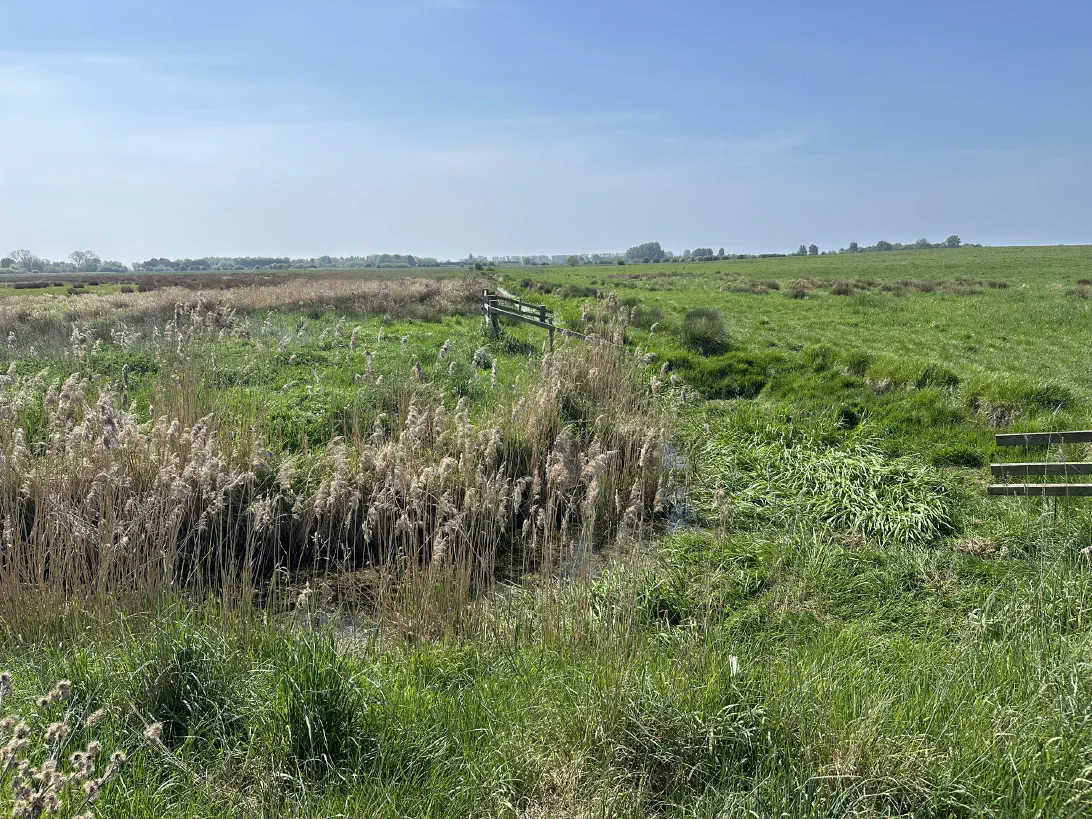Meet the team: Faye Whiley, Species Recovery Officer
Find out more about Species Recovery Officer Faye Whiley.

In Autumn 2024, Lifescape became a designated ‘responsible body’ under new English legislation introducing conservation covenants: a powerful legal tool to protect restored land for the long term. Lifescape’s Legal Project Officer Katherine Blatchford visits High Fen, our first conservation covenant site…
As a rewilding lawyer at Lifescape, I spend much of my time working on how legal frameworks can help nature recover and thrive. But nothing beats stepping out of the office and into the field — especially when the field in question is High Fen, a bold and inspiring rewilding project in Norfolk.
I visited High Fen in May 2025, and the experience was both energising and educational. This 290 hectare site, once underperforming farmland, is at the very start of its journey to becoming a biodiverse wetland ecosystem — thanks to the vision and investment of Nattergal, a company at the forefront of large-scale nature restoration.
High Fen sits on the very edge of what was once the Fens — a vast wetland that stretched across much of eastern England. As Matt, Nattergal’s Natural Capital Project Manager, explained during our tour, the Fens were historically drained for agriculture, but in doing so, we lost one of Britain’s richest wetland habitats.
High Fen, once used to grow daffodils, is no longer viable for agriculture due to the sandy peat soils that make traditional farming uneconomical. But that same land is perfectly suited for rewetting and restoration. It contains valuable peat soils which can store large amounts of carbon if kept wet, and it holds the potential to bring back important habitats like coastal floodplain grazing marsh, chalk grassland, and scrub.
The Nattergal team — including Frank (Site Manager), Claire (Chief Commercial Officer), Alienor (Business Analyst), and Matt— walked us through their plans for the site. Their passion and depth of knowledge were evident at every turn.
Walking across the site I could hear the first cuckoos of the year and see lapwings. Wet reed-filled ditches cross the land. These ditches harbour unusual and rare fen species such as water violets, which it is hoped will spread across the site as the water returns. I did not catch a glimpse of one of my visit but cranes can often be seen on the site too.
Even on a hot dry day in May, there are parts of the site which remain damp and squishy underfoot and are home to the strange mare’s tail plant, revealing the water-holding properties of the ground here. Key to rewetting the site is ensuring that water does not easily escape. At one point on the tour we were shown the bund, a subtle chalk marl construction now only just visible which will help to keep water on the site and prevent it being lost to the cut-off channel which adjoins the site.
So where does Lifescape come in?
In Autumn 2024, Lifescape became a designated ‘responsible body’ under new English legislation introducing conservation covenants — a powerful legal tool to protect restored land for the long term. High Fen is our first official conservation covenant site, marking a huge milestone for our work.
A conservation covenant is a legal agreement between a landowner and a responsible body like Lifescape. It ensures that land is managed for nature — not just now, but long into the future, even if ownership changes. We also have enforcement powers if things go off track.
This legal framework is especially important for supporting the Biodiversity Net Gain (BNG) market. Under BNG rules, developers must deliver at least a 10% increase in biodiversity. This could be on their site or by purchasing biodiversity units from habitat banks like High Fen. A conservation covenant helps secure those biodiversity improvements legally.
At Lifescape, our mission is to catalyse the creation, restoration, and protection of wild landscapes. Supporting projects like High Fen is core to that mission. We’re excited to work with forward-thinking organisations like Nattergal to explore how BNG can become a meaningful funding stream for landscape-scale rewilding without compromising ecological integrity.
Done right, BNG has the potential to unlock long-term, sustainable funding for the kind of large-scale restoration work the climate and biodiversity crises demand.
High Fen is still early in its restoration journey, but the potential here is immense: not just for wildlife, but for carbon storage, clean water, flood mitigation, and community connection to nature.
It’s a powerful reminder that rewilding isn’t just about returning land to nature — it’s about creating a future where people and the planet thrive together. And it’s a privilege for Lifescape to play a role in making that happen.
Find out more about Species Recovery Officer Faye Whiley.
This is the final post in a series explaining how we work at the Lifescape Project: how we use different skills, and - most importantly - how we collaborate and combine our five core areas of expertise to tackle the complex challenge of the biodiversity crisis.
Meet Hannah James, Volunteer Social Media Manager with Lifescape